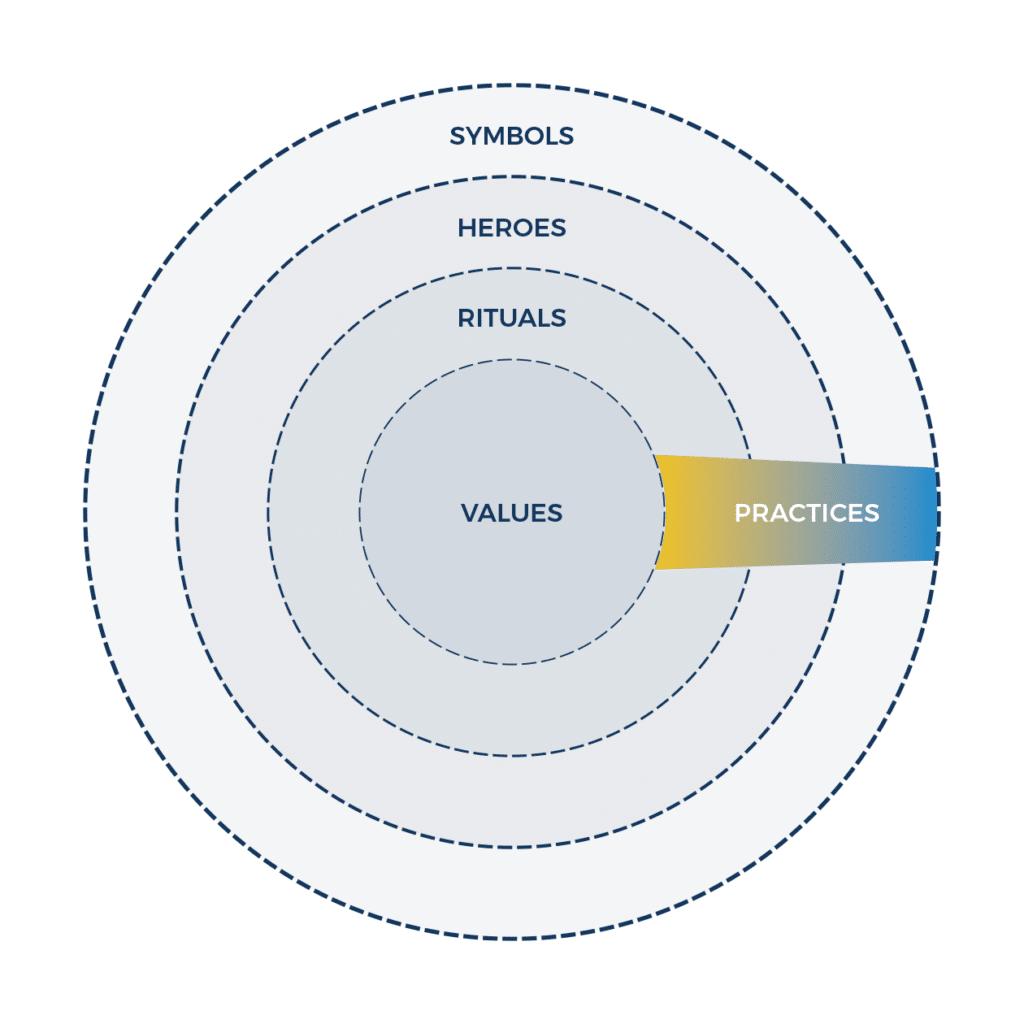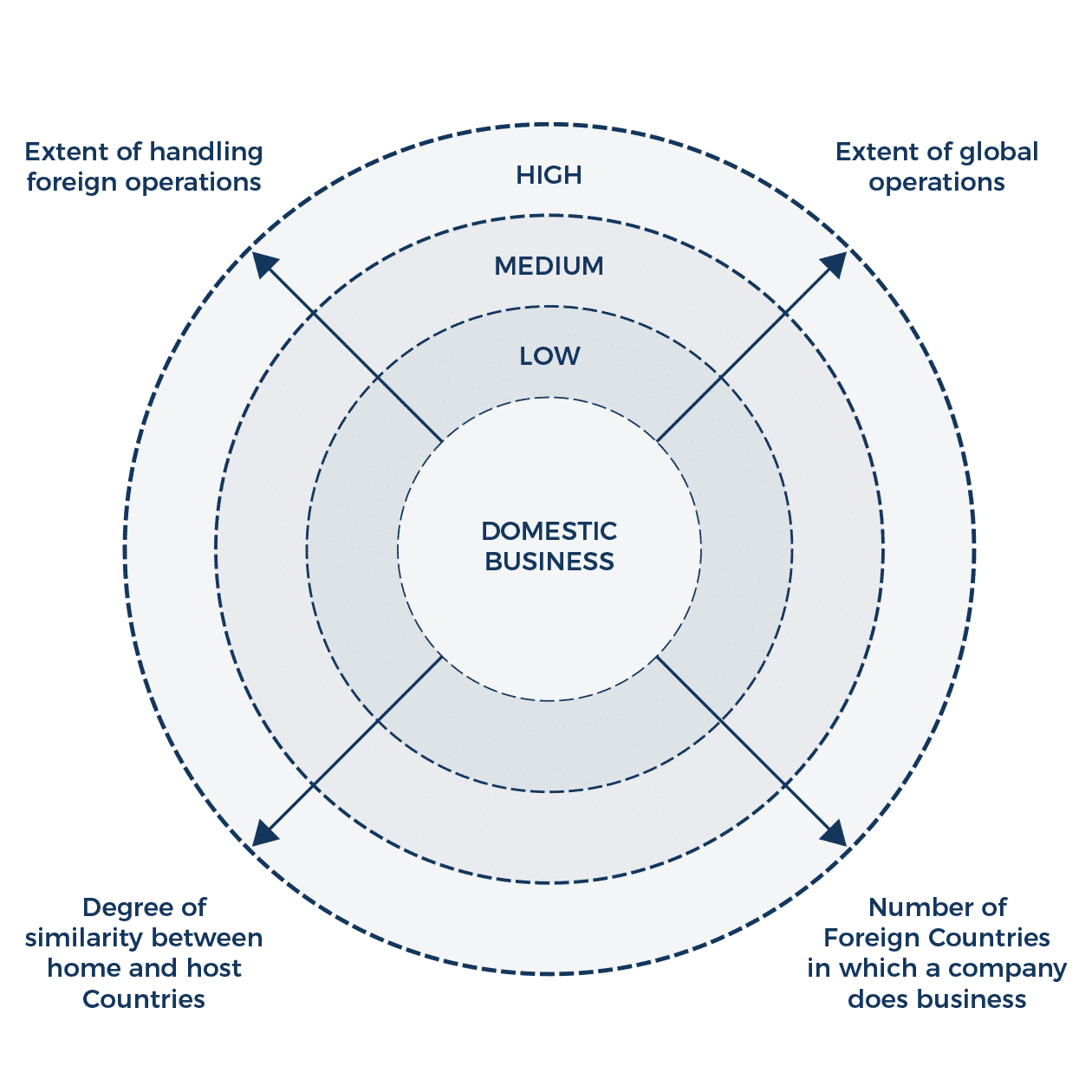In the complex tapestry of organizational success, culture stands out as a fundamental driver, weaving together its people’s collective aspirations and daily actions. The invisible yet palpable force shapes decisions, behaviors, and outcomes. As we explore various definitions of culture, it’s crucial to recognize its role not merely as a backdrop but as an active, dynamic participant in the narrative of success.
Leadership plays a pivotal role in this context, acting as the steward of culture by articulating a shared purpose and clear goals. Influential leaders ensure that every organization member understands their role and how it contributes to the collective mission. This alignment fosters a sense of belonging and commitment, empowering individuals to grow professionally and personally, thus enhancing the human system as a whole.
As we delve into the definitions and dimensions of culture, let us remember that an organization’s strength often lies in its ability to nurture a culture that resonates with its people, drives performance, and sustains growth. This post explores how diverse cultural constructs can uniquely contribute to creating robust, adaptive, and successful organizations.
Definitions
- “Culture refers to the cumulative deposit of knowledge, experience, beliefs, values, attitudes, meanings, hierarchies, religion, notions of time, roles, spatial relations, concepts of the universe, and material objects and possessions acquired by a group of people over generations through individual and group striving.”
- “Culture is the systems of knowledge shared by a relatively large group of people.”
- “Culture is communication; communication is culture.”
- “Culture, in its broadest sense, is not just a collection of knowledge and experiences, but also a powerful force that shapes behavior. It is the totality of a person’s learned, accumulated experience which is socially transmitted, or more briefly, behavior through social learning. This understanding is crucial for researchers seeking to understand societal norms and individual actions.”
- “A culture is a way of life of a group of people–the behaviors, beliefs, values, and symbols that they accept, generally without thinking about them, and that are passed along by communication and imitation from one generation to the next.”
- “Culture is symbolic communication. Some of its symbols include a group’s skills, knowledge, attitudes, values, and motives. The meanings of the symbols are learned and deliberately perpetuated in a society through its institutions.”
- “Culture consists of patterns, explicit and implicit, of and for behavior acquired and transmitted by symbols, constituting the distinctive achievement of human groups, including their embodiments in artifacts; the essential core of culture consists of traditional ideas and especially their attached values; culture systems may, on the one hand, be considered as products of action, on the other hand, as conditioning influences upon further action.”
- “Culture is the sum of the total of the learned behavior of a group of people that are generally considered to be the tradition of that people and are transmitted from generation to generation.”
- “Culture is not just a set of learned behaviors, but a collective programming of the mind that distinguishes the members of one group or category of people from another. This understanding is essential for individuals, as it helps them understand their own cultural background and its influence on their lives.”
- “Culture is how we do things around here.”
Determinism
- The position that the ideas, meanings, beliefs and values people learn as members of society determines human nature. People are what they learn. Optimistic version of cultural determinism place no limits on the abilities of human beings to do or to be whatever they want. Some anthropologists suggest that there is no universal “right way” of being human. “Right way” is almost always “our way”; that “our way” in one society almost never corresponds to “our way” in any other society. Proper attitude of an informed human being could only be that of tolerance.
- The optimistic version of this theory postulates that human nature being infinitely malleable, human being can choose the ways of life they prefer.
- The pessimistic version maintains that people are what they are conditioned to be; this is something over which they have no control. Human beings are passive creatures and do whatever their culture tells them to do. This explanation leads to behaviorism that locates the causes of human behavior in a realm that is totally beyond human control.
Relativism
- Different cultural groups think, feel, and act differently. There is no scientific standards for considering one group as intrinsically superior or inferior to another. Studying differences in culture among groups and societies presupposes a position of cultural relativism. It does not imply normalcy for oneself, nor for one’s society. It, however, calls for judgment when dealing with groups or societies different from one’s own. Information about the nature of cultural differences between societies, their roots, and their consequences should precede judgment and action. Negotiation is more likely to succeed when the parties concerned understand the reasons for the differences in viewpoints.
Manifestations
Cultural differences manifest themselves in different ways and differing levels of depth. Symbols represent the most superficial and values the deepest manifestations of culture, with heroes and rituals in between.
- Symbols are words, gestures, pictures, or objects that carry a particular meaning which is only recognized by those who share a particular culture. New symbols easily develop, old ones disappear. Symbols from one particular group are regularly copied by others. This is why symbols represent the outermost layer of a culture.
- Heroes are persons, past or present, real or fictitious, who possess characteristics that are highly prized in a culture. They also serve as models for behavior.
- Rituals are collective activities, sometimes superfluous in reaching desired objectives, but are considered as socially essential. They are therefore carried out most of the times for their own sake (ways of greetings, paying respect to others, religious and social ceremonies, etc.).
- The core of a culture is formed by values. They are broad tendencies for preferences of certain state of affairs to others (good-evil, right-wrong, natural-unnatural). Many values remain unconscious to those who hold them. Therefore they often cannot be discussed, nor they can be directly observed by others. Values can only be inferred from the way people act under different circumstances.
- Symbols, heroes, and rituals are the tangible or visual aspects of the practices of a culture. The true cultural meaning of the practices is intangible; this is revealed only when the practices are interpreted by the insiders.

Layers
People even within the same culture carry several layers of mental programming within themselves. Different layers of culture exist at the following levels:
- The national level: Associated with the nation as a whole.
- The regional level: Associated with ethnic, linguistic, or religious differences that exist within a nation.
- The gender level: Associated with gender differences (female vs. male)
- The generation level: Associated with the differences between grandparents and parents, parents and children.
- The social class level: Associated with educational opportunities and differences in occupation.
- The corporate level: Associated with the particular culture of an organization. Applicable to those who are employed.
Differences
A variable can be operationalized either by single- or composite-measure techniques. A single-measure technique means the use of one indicator to measure the domain of a concept; the composite-measure technique means the use of several indicators to construct an index for the concept after the domain of the concept has been empirically sampled. Hofstede (1997) has devised a composite-measure technique to measure cultural differences among different societies:
- Power distance index: The index measures the degree of inequality that exists in a society.
- Uncertainty avoidance index: The index measures the extent to which a society feels threatened by uncertain or ambiguous situations.
- Individualism index: The index measure the extent to which a society is individualistic. Individualism refers to a loosely knit social framework in a society in which people are supposed to take care of themselves and their immediate families only. The other end of the spectrum would be collectivism that occurs when there is a tight social framework in which people distinguish between in-groups and out-groups; they expect their in-groups (relatives, clans, organizations) to look after them in exchange for absolute loyalty.
- Masculinity index (Achievement vs. Relationship): The index measures the extent to which the dominant values are assertiveness, money and things (achievement), not caring for others or for quality of life. The other end of the spectrum would be femininity (relationship).
Reconciliation
Cultural awareness:
- Before venturing on a global assignment, it is probably necessary to identify the cultural differences that may exist between one’s home country and the country of business operation. Where the differences exist, one must decide whether and to what extent the home-country practices may be adapted to the foreign environment. Most of the times the differences are not very apparent or tangible. Certain aspects of a culture may be learned consciously (e.g. methods of greeting people), some other differences are learned subconsciously (e.g. methods of problem solving). The building of cultural awareness may not be an easy task, but once accomplished, it definitely helps a job done efficiently in a foreign environment.
- Discussions and reading about other cultures definitely helps build cultural awareness, but opinions presented must be carefully measured. Sometimes they may represent unwarranted stereotypes, an assessment of only a subgroup of a particular group of people, or a situation that has since undergone drastic changes. It is always a good idea to get varied viewpoints about the same culture.
Clustering cultures:
- Some countries may share many attributes that help mold their cultures (the modifiers may be language, religion, geographical location, etc.). Based on this data obtained from past cross-cultural studies, countries may be grouped by similarities in values and attitudes. Fewer differences may be expected when moving within a cluster than when moving from one cluster to another.
Determining the extent of global involvement:
- All enterprises operating globally need not have the same degree of cultural awareness. Figure 2 illustrates extent to which a company needs to understand global cultures at different levels of involvement. The further a company moves out from the sole role of doing domestic business, the more it needs to understand cultural differences. Moving outward on more than one axis simultaneously makes the need for building cultural awareness even more essential.

Reference: Hofstede, G. (1997). Cultures and Organizations: Software of the mind. New York: McGraw Hill.










